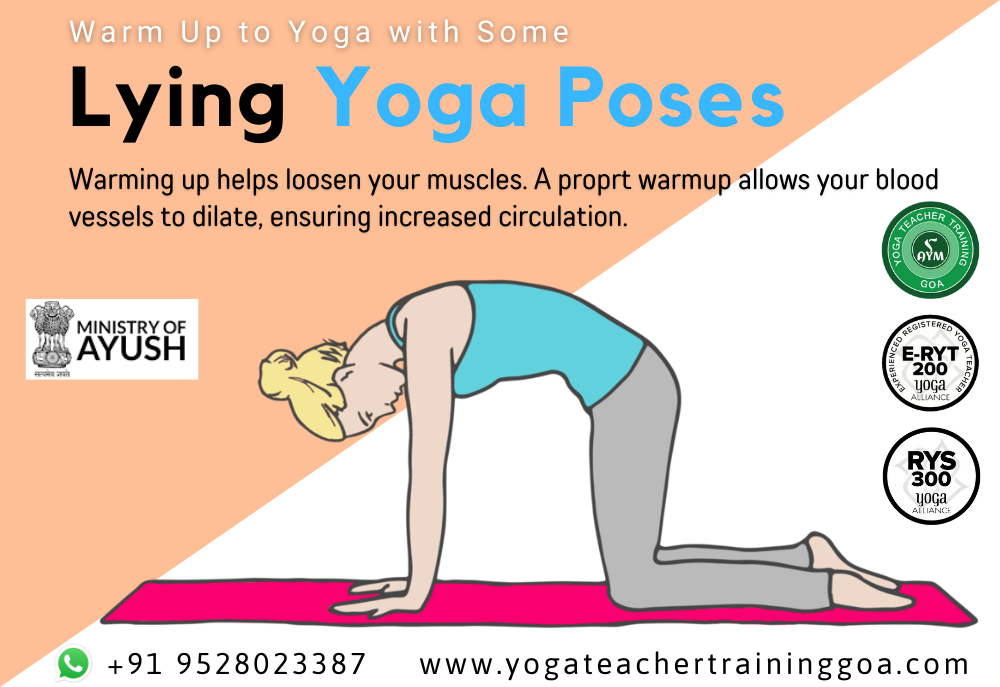
Warm-Up Yoga Before a Yoga session
Warm-Up Yoga is always a great idea to start with a series of Yoga poses with some accessible warm-up positions while lying down.
You’re about to read the result of ongoing interaction with yoga enthusiasts like you over a long period. This post clarifies some of the most frequently asked questions about yoga poses and address common-interest issues. We trust you will find this article helpful.
Most lying Yoga poses aim to prepare the body muscles in areas such as strength and flexibility. Muscle stretches improve the way you will perform other yoga poses and help your body improve blood circulation. They also animate the nerve endings, keeping every part of your body alive and dynamic.
Another benefit of the prone yoga poses is they require and teach you to have a straight back and conventional posture. For example, certain poses, such as the leg pull, may seem highly demanding. At first, so you should not get discouraged if you cannot follow the instructions from the first attempt. Just do the best you can!
Leg Raises:
The single-leg raise is a good yoga pose to start a yoga session and prepare yourself for the following asanas. Leg raises are significant for improving the tone of your back and abdominal muscles. To adequately do this movement, you should keep your back “fixed” to the ground and not enable your spine to bend and your shoulders to assist in the lifting motion. With palms holding on the basis, try to raise your legs gently while keeping control. The neck should remain comfortable during this motion, and your lungs should be allowed to breathe smoothly.
Leg Pulls:
Leg pulls improve tone and flexibility in your leg muscles. Leg pull is excellent for a whole stretch of the leg muscles, which, in time, will enable you the capability to perform advanced yoga poses.
While resting on the back on the ground, try-catch your foot while your leg sits straight above your head. If stretching your foot is a problem, try using a band to assist you out. With the leg kept continually straight, try to designate your heel towards the roof. Smoothly pull the leg closer to your body while keeping your back upright and shoulders close to the ground. Slide your other leg on the floor, holding it straightened, and roll your thigh until your kneecap is directed towards the ceiling. With your shoulders still flat, push your toes away from you, expanding them while drawing the raised leg towards you.
Side note: Are you finding this information on Yoga poses useful? We have always been curious about this, and when we found very little information online about it, we decided to share a part of what we’ve learned through our research – which is how we write this article.
Cat Pose:
Movement control and breathing are necessary for all yoga poses, and the Cat pose (Bidalasana) is a great posture to assist you in getting ready. This technique improves balance and coordination. You can do it in a hands and knees position, slightly than lying, but it is still relaxed and restful.
Alignment of the center of your body is closely related to your central area (pelvic area) concerning the rest body. The primary balance point in all poses should be considered your hip area because it is the one dictating the movement and direction of your spine – your main energy line.
In the cat tilt pose, your hip is bent forward, making your spine arch backward. Most yoga poses require using either the dog tilt (leaning back) or the cat tilt, and some require you to be neutral, while others need a combination of all choices.
Now that you have read this article do not stop learning. All you can talk about yoga poses and look up a few more resources on the topic. Soon you will discover you have all you ever need to know!

